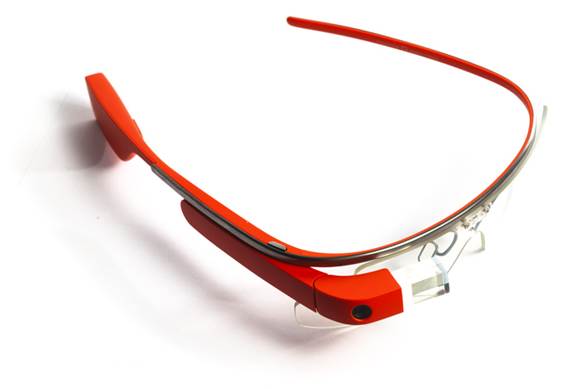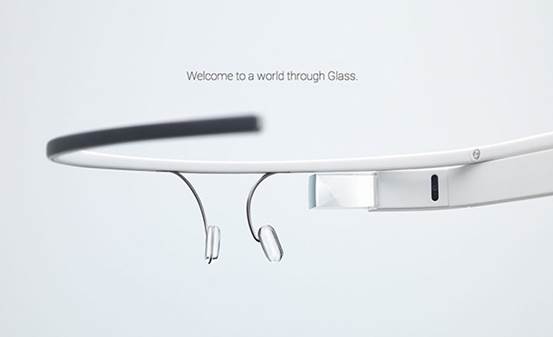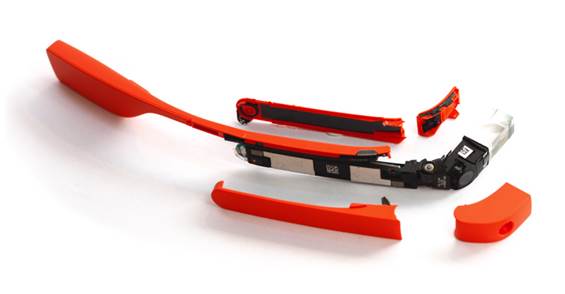However, those who completely immersed in
the information age will enjoy solving the physical inconveniences presented by
the problem. A heads-up display seems like a natural fit, and that's why we
have Google Glass.
Stand in a line of people in just about any
major metropolitan area in the world and you will see the same thing: slouched
shoulders and down-turned faces staring glumly at smartphone screens. Some
people never look away, completely immersed in whatever is happening in their
hands, while others constantly pulled the phone out of pocket or purses and
popping on the screens for just a moment before putting them away again for
just a minute or two.

Google
Glass
Smartphone is an amazing stuff, but for
those who are addicted to texting, they are somewhat difficult to use. The
trouble becomes worse when these devices are getting bigger. One approach would
be to relax a little and stop thinking for a moment to check Facebook messages
every 30 seconds. However, those who completely immersed in the information age
will enjoy solving the physical inconveniences presented by the problem. A
heads-up display seems like a natural fit, and that's why we have Google Glass.
It is a headset with projection screen, one camera and data connectivity which
can revolutionize the mobile device industry. It could also cause a public
uproar over privacy concerns. Is the potential worth the risk? Let's find out.
Hardware
First, let’s clarify a bit about grammar.
In the English language we refer to eyeglasses as a "pair" despite
actually being one thing, here we would like to mention Google Glass as a
singular item. Therefore, it's not a pair of Google Glasses, but a single Google
Glass headset.

Therefore,
it's not a pair of Google Glasses, but a single Google Glass headset.
Glass has a very simple, clean design that,
in some regards, is beautiful and elegant; in others, crude and clumsy. We will
begin with the elegant bits, most attractive being the plastic-backed titanium
band that sweeps around and forms the frame. It's a single piece that grows
very subtly thinner in the middle and thicker on the edges, deceptively simple
from a distance and strongly defining the overall look.
From here, two nose grippers (also in
titanium) bent down, each ending with a transparent silicone pads. These pads
can be replaced and sticky enough to keep the entire unit from sliding away
from your nose. We do not say they totally lay into place - in fact, they will
gradually come down, particularly if you nose is not completely dry.

Two
nose grippers (also in titanium) bent down, each ending with a transparent
silicone pads
The continuous titanium band plus the two
arcing grippers provide the basic shape, simple but beautiful, a natural
balance is completely destroyed by the plastic assembly that looks crudely
slung from the right side. Admittedly, this is the big step from the original
"Android smartphone duct-taped to Sergey's sunglasses" concept, and
in many ways its functional styling has its own techy appeal. But, in a joint
collaboration of consumer electronics design, the overall aesthetic here leans
far closer to prototype than polished.

All
electrical circuits of the device are located in two plastic covers, one that
rests behind your ear and a second that's up front
All electrical circuits of the device are
located in two plastic covers, one that rests behind your ear (containing the
battery and bone conductive speaker (audio technology that transfer through the
bone)) and a second that's up front (with processor, camera and screen). One
side of the front is also touch-sensitive, forming a thin trackpad. This
division does a good job of hiding the bulky battery from sight and ostensibly
balances the whole contraption evenly, with the battery mass offsetting that of
everything on the front.
However, in practice, the author finds it
difficult to make the Glass to sit evenly in a long time. The right side (with
all equipment) tended to shift lower than the left. That creates some problems,
because the Glass is said to be positioned such that the screen is located high
enough above your eyes that it isn't a distraction. Google's (incredibly
helpful) Glass trainers will ensure you've got it perfectly positioned before
you walk out the door, but keeping it there required constant fiddling.

However,
in practice, the author finds it difficult to make the Glass to sit evenly in a
long time
However, in general, the Google Glass is no
more or less inconvenient to carry than your normal glasses. The overly
flexible of the band can literally bring a bit difficult unless you use both
hands, but once positioned properly, it becomes quite comfortable on both large
and small heads. Those not used to wearing non-Google glasses will probably
find the nose grippers uncomfortable at first, but those who are used to
wearing glasses will have their own problems.
Google Glass can and will fit over most
eyeglasses, but rarely will it do so comfortably. And depending on the size and
shape of the glasses, the glasses may be partially obscured by the frame.
Finally, after letting dozens of people briefly try this in a short time, a few
with eyesight difficulties were simply unable to focus on the display at all.
Before Glass becomes popular, it will require an adjustable focal depth.

Google
includes 1 microfiber carrying case with a hard plastic piece inserted to
protect sensitive things
In fact, very little is adjustable in
Glass. You can change the wake angle (how far back you must tilt your head for
the display to pop on) and enable or disable head detection, which
automatically turn off the headset if you remove it. That's it. You can’t
adjust the volume or screen brightness, can’t disable Wi-Fi or Bluetooth (both
seem to always open), can't re-arrange the application cards in the interface
or set their priority, can’t change the default screen timeout and you can’t
activate a silent or do not disturb mode - although you could argue that simply
taking Glass off serves the same purpose.

Glass’s
charger and cable
Unfortunately, the act of taking off the
headset can be a little inconvenient. That unbreakable titanium band looks good
and provides flexibility, but it also means that Glass does not fold up like a
traditional pair of glasses, so it will not dangle from the front shirt pocket
or easy to slip into a pocket. That's made worse by the seeming fragility of
the exposed refractive display, which we were told shouldn't be touched. Google
includes 1 microfiber carrying case with a hard plastic piece inserted to
protect sensitive things, but the resulting package is hugely bulky. Better
bring your large bags.
Crack the case open (which we do not
recommend) and you will find one outdated TI OMAP 4430 processor, paired with
1GB of RAM and 16GB of storage (12GB available). Contents will be pushed to
your Google+ account wirelessly by default, but you can get it through the
micro-USB port if you like - which is also a way to charge Glass. Battery size
remains unknown, but battery life is poor. Under average usage, read email,
take fewer pictures and videos, we have about 5 hours before it turns itself
off. With lengthier filming of videos, which can be severe enough to make your
temple warm, we can make sure you could deplete all the energy of Glass for a
few hours. For a device that you'd want to set on your face and forget about,
having to remember to charge it in the middle of the day is an extreme
disappointment.